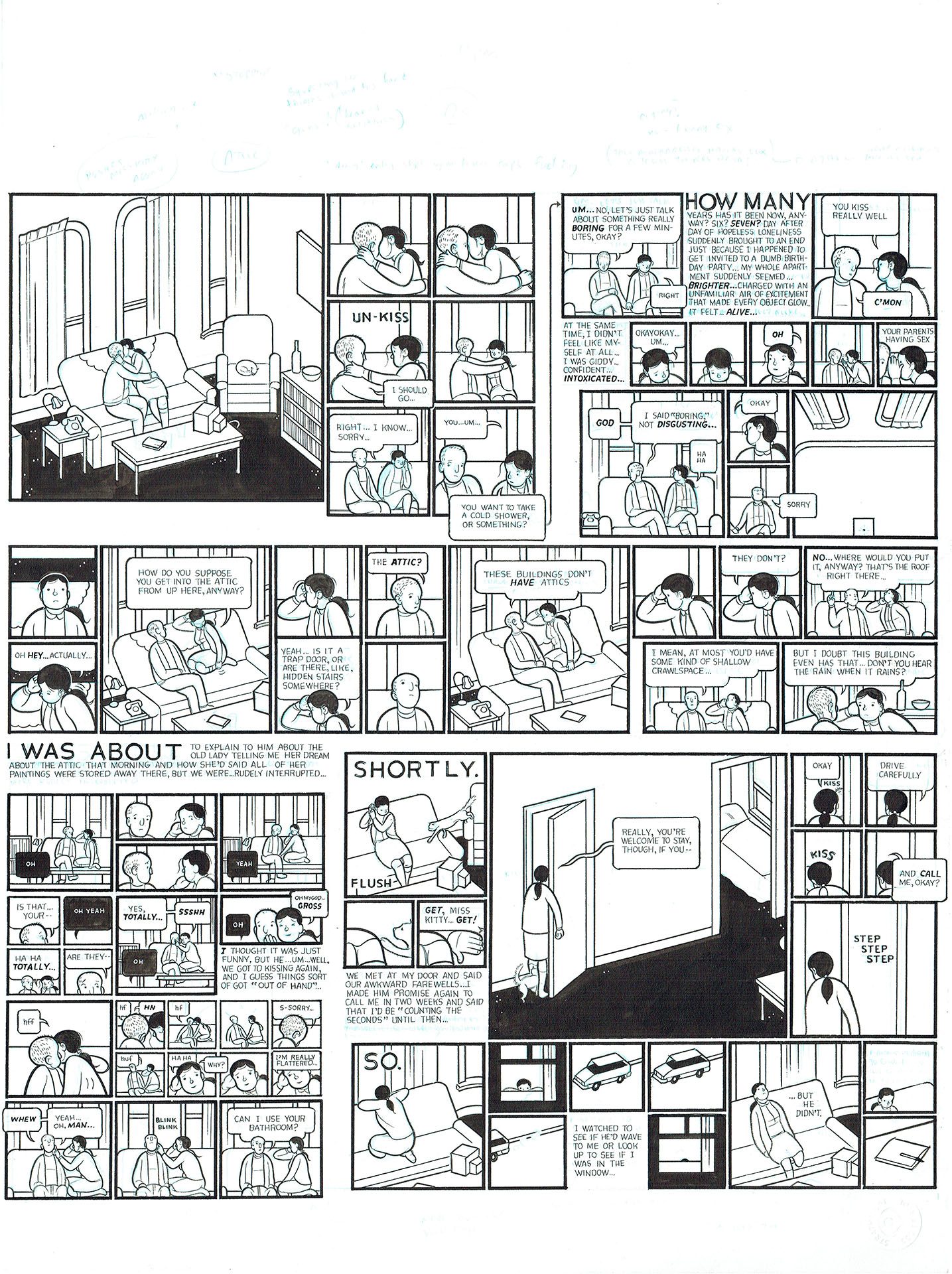

That's where the "flash" is here, in the amazing art (he's one of the 4-5 best and most influential comics artists ever, without question), clearly.

And that is (in part) just what he does, no Hollywood, no flash in the narratives, and yet elevating these lives to importance in these, carefully and lovingly rendered-and in its own way spectacular, exquisite-ways. When this book came out I went to a talk Ware gave at Frank Lloyd Wright's Unity Temple, here in our village of Oak Park, IL, the nearest west suburb of Chicago (and yes, Ware lives 3-4 blocks from me in Oak Park, I'm a neighbor-name-dropper, sorry, okay, I'm human), and he said part of the impetus for the book came from something his wonderful storyteller Grandma suggested he do: To tell the stories of everyday people just doing what they do every day, washing dishes, folding clothes, nothing spectacular. So this is a book about women (two others, as well) primarily, who live largely alone and mostly unhappy, and much of that unhappiness seems to be because of men, but it is also about capturing their interior life, each of them. She thinks a lot about her first boyfriend, who left her after an abortion, and feels a little frustrated with her husband. Later in life, as a mother, she puts on weight and feels her creativity stifled by what is now a suburban life in Oak Park. The woman sees herself as a failed artist, and part of the work follows her in her twenties. She lives on the third floor of a three-story Chicago brownstone apartment building, with a couple who constantly argue on the second floor and an older landlady on the first. The protagonist of Building Stories is an (unnamed) woman who lost part of her leg in a childhood boating accident. Ware is writing about important and also relatively mundane events in the lives of ordinary people he's writing about eating and sleeping and work and talk and relationship struggles and parenting, the stuff of any novel, and it's also about adult loneliness. I think the publication of Building Stories is one of the most important events in the history of graphic literature, an instant classic, but it is not all play, and it is not primarily a book for kids.

Why a game box, with a game board? To resuscitate, in part, the idea of reading as game, even if not exclusively for "fun" (though it is also about that).

6/1/12: I just finished this brilliant, brilliant "book" (that comes in a game box, larger than a Monopoly box), with various sizes and colors and shapes of books and magazines and flyers and a children's book and a game board.


 0 kommentar(er)
0 kommentar(er)
